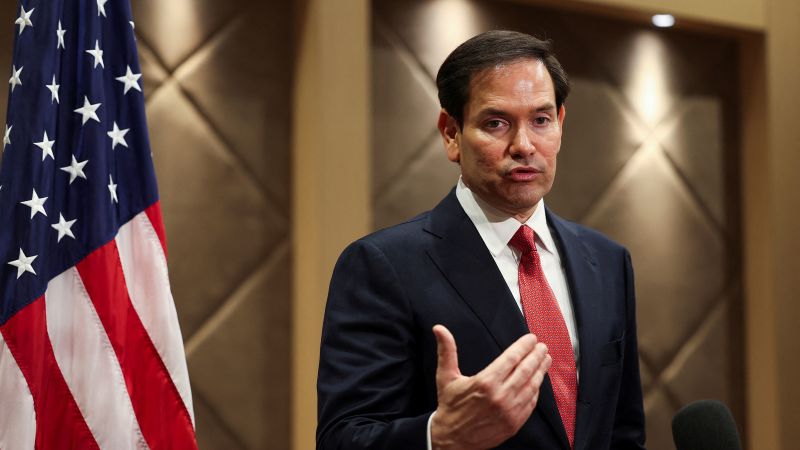The recent decision made by the US State Department to halt new student visa appointments has stirred considerable discussion and concern among international students and educational institutions. According to an internal diplomatic cable that was reviewed by CNN, this move is closely tied to an initiative aimed at expanding the “social media screening and vetting” processes for every applicant seeking student visas. This policy shift has the potential to reshape the landscape of international education in the United States.
The cable, dated Tuesday morning and signed by Secretary of State Marco Rubio, outlines the State Department’s commitment to reviewing the procedures currently in place for screening and vetting student and exchange visitor visa applicants—specifically those holding F, M, and J visas. As part of this comprehensive review, the State Department intends to provide guidance on broader social media vetting protocols. This policy follows a string of actions taken by the Trump administration, which included the revocation of multiple student visas and efforts to halt the enrollment of foreign students at prestigious institutions such as Harvard University. However, a judicial ruling has temporarily blocked this specific measure.
Moreover, the diplomatic cable hints that the ongoing vetting processes, previously mandated for a limited number of applicants, had already begun focusing on issues related to antisemitism. However, the planned expansion to include all incoming applicants could significantly delay the issuance of student visas, causing a backlog if the pause on new appointments persists. Such a backlog could lead to unforeseen consequences for both educational institutions reliant on international students and the students themselves, who may have their academic plans disrupted.
Politico was among the first to report regarding the State Department’s directive, highlighting the urgency and ramifications of the cable’s contents. Notably, the cable points out that introducing widespread social media screening could have profound implications on the operations of consular sections, which are responsible for managing visa applications. Such an expansive vetting regime may overwhelm existing processes, necessitating adjustments to how consular sections prioritize their workload in relation to the number of cases they can handle effectively.
As part of this immediate change, embassies and consulates around the globe have been instructed to refrain from increasing appointment capacity for student and exchange visas until further directives are issued. While this approach effectively pauses any new appointment scheduling, it also mandates the cancellation of any available appointments that have not yet been taken. Despite this, scheduled appointments that existed prior to the cable’s release can still be honored.
Amid these developments, the cable advises consular sections to continue prioritizing critical services. These include support for U.S. citizens abroad, immigrant visa processing, and efforts targeted at fraud prevention. This crucial guidance reinforces the State Department’s emphasis on ensuring national security while managing the complexities associated with visa processes.
At a recent State Department briefing, spokesperson Tammy Bruce was non-committal when questioned about the cable, stating only that the department utilizes a “comprehensive array of tools” for vetting individuals wishing to enter the United States. Her reluctance to confirm specific details from the cable underscores the sensitive nature of immigration policies and the complexities involved in managing national security while maintaining international educational exchange.
As international students weigh their options amidst this uncertainty, educational institutions in the United States must adapt to diverging realities. The ramifications of these policy changes may not only influence the numbers of students admitted to U.S. universities but could also alter the broader perception of the United States as an accessible and inviting destination for higher education. As these developments unfold, stakeholders will need to monitor how these changes affect the overall landscape of international education in the country.



